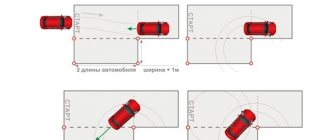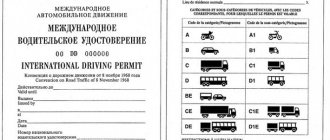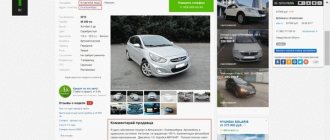Good day to all! If you are here, then you are probably interested in registering a homemade trailer.
From the material on registering a trailer, you can find out that such a procedure is required. When buying or making a trailer, you need to make the appropriate manipulations. This is practically the same as registering a purchased car in your name.
There is no point in repeating ourselves and talking about why people decide to make a homemade trailer for a car. The attached link will provide you with detailed material on this topic.
Today we will talk about how to complete this procedure and obtain documents.
Procedure for carrying out registration measures
This process is not particularly complicated. By adhering to a certain algorithm, you will legalize the trailer as quickly as possible and without any difficulties.
Registration of a homemade trailer with the traffic police:
- Visit the traffic police department at your place of residence and find out what documents you will need, and also explain that you need a referral for an examination, since the trailer is homemade.
- After you receive the referral, contact the laboratory, as a rule, it is located in (US). Attach to the application for examination photographs of the homemade trailer, certificates and receipts for all elements that were used in its creation. After this, pay for the examination.
- At the end you should receive a final report and a certificate of quality indicating that the trailer has been approved by the commission. Otherwise, you will only receive a report that will indicate all discrepancies and problems.
- After this, you need to return to the traffic police to begin the registration procedure. Submit all documents along with the act and quality certificate. Before doing this, pay the fee and attach payment receipts to your documents.
- After checking the documents, the traffic police will give you a license plate. Only after registration the driver has the full right to operate a homemade trailer, otherwise it will be considered an offense.
Accessories for creating a trailer
To create a boat trailer you will need a considerable amount of different materials.
To begin with, we note that it is advisable to purchase a certified torsion axle and coupling device from a specialized store. You will also need the following materials and parts:
- profile with a wall thickness of 4 mm and dimensions 60x40 (as an alternative, you can use a pipe with dimensions 80x40x3.5);
- channel 12;
- metal sheet (thickness 2 mm);
- wings;
- support leg;
- wiring;
- lighting elements;
- wheels;
- winch;
- keel blocks (can be made independently)
- anti-corrosion coating and paint of your choice.
You should not buy too thick channels or heavy pipes, otherwise the weight of the future trailer will subsequently increase significantly.
In turn, the latter will increase the load on the car engine and gearbox. In addition, fuel consumption will noticeably increase. For these reasons, select high-quality lightweight materials, but, of course, high strength.
When making a boat trailer, special attention should be paid to the dimensions of the product, that is, dimensions and weight. In addition, do not forget to re-inquire about the capabilities of the vehicle to which this boat trailer will be attached in the future.
The total weight of the towed trailer and boat must not exceed the maximum permissible values specified in the vehicle registration certificate.
What is the penalty for using an unregistered homemade trailer?
In this case, administrative sanctions will be imposed against you. Police officers may issue you a fine or draw up a report on the deprivation of your right to drive a vehicle for 1 to 3 months.
Is it possible to register a homemade trailer for a car after you have been issued a fine? Yes, the law allows it! If you have been issued a fine for unauthorized use of a homemade trailer, you can pay it and then submit documents for registration.
Today, homemade trailers are a fairly popular means of transport among many motorists, since their parameters can be easily adjusted to specific needs, thus saving on the services of cargo transportation companies. But its registration is mandatory.
Stages of making a boat trailer with your own hands
First of all, you should calculate the balancing of the trailer so that the weight of the boat is distributed evenly along the sides (across the width of the boat). Well, most of the load (along the boat) should fall on the front side 65-75% (from the side attached to the car - to the tow bar).
Creating a Frame
- To create a durable structure, you must use only a welding machine. All frame elements (profile or pipe) are welded together with seams separately from the chassis and axle (grabbing and strengthening with a plate is unacceptable) and are reinforced with a “kerchief” made of thin metal.
- Attach the axle to the frame with M12-13 bolts, strictly perpendicular to the central beam (wheels). Then you need to put the wheels on the trailer, drill holes at the junction of the axle and the towbar and attach the fastening mechanism (it is advisable to buy one ready for trailers).
Frame check
- After this, it is advisable to check the finished body for perpendicularity of the axis in relation to the wheels. To do this, you need to couple the trailer to the car and drive it a little along the road to see if it leads to the side.
- The next step is to check the balance of the frame. We install the boat on the trailer and see what load is placed on the tow bar. The load on the coupling mechanism should be 50-80 kg. If the frame “leads” or the balance of the body is not maintained, remove the axle and set it to its normal position.
Frame equipment
- Next, we install the support leg on the body; it is also called the steering wheel. A very convenient thing when moving the trailer manually (but not necessary). It has a lower handle, with which you can adjust its height, and a lower handle, with which you can adjust the position of the wheel relative to the trailer axis.
- Before driving onto the highway, the wheel is raised up and fixed there with a handle. If it is necessary to move the trailer manually, it is lowered and used as a third wheel, with the ability to turn in different directions. Then we install the metal wings by welding. If the wings are plastic, then we make fastenings and install them with bolts.
- After this, we weld the winch support to the front of the axle (approximately above the support leg). It is made from a piece of pipe 60x40x2 - fastenings for wings and keel blocks are made from the same pipe.
Keel blocks are attached to the frame with pieces of metal no less than 4 mm. thick.
- You should also take into account when installing the rollers that they should rotate very easily on the keel block, so that when dragging the boat onto the trailer they do not break and damage the boat (if it gets stuck and does not spin).
- The dimensions and angle of the keel block support should be such that the rollers do not put too much pressure on one side, but are completely adjacent to the skin of the boat. This way they will deform the bottom of the boat less. In order to install them correctly, you need to make a model of the keel of your boat from a piece of plywood and align the wheels on it.
- If you need wheels of non-standard sizes, you can easily make them yourself. Rollers for the keel block are made from polyurethane, but for this you will need a lathe. Grind the polyurethane on a machine to the desired size, drill a hole and install it on a stud or bolt as an axis. Then we weld a U-shaped mount for the axle from the corner and twist the finished roller together.
Finalization
- After all the components of the trailer are in place, the trailer still needs to be finished. We prime the metal parts; if desired, we putty and paint the rough places.
- After this, we install mudguards and wiring with side lighting.
- We connect this whole thing as on a regular trailer using connectors at the towbar and fix the wiring on the body under the boat so that it does not get damaged.
A self-made trailer can serve faithfully for many years if it is properly cared for. When you are in a car on the road with a trailer attached, then behave appropriately, carefully and in accordance with all the rules.
It should also be mentioned that experienced boat owners store their boats directly on the trailer in winter. This does not harm the trailer, and the boat is preserved much better in this position.
PVC boat trailer
https://myownship.ru
Basic requirements for registering a homemade trailer
In order for the examination to issue a report on the proper quality of a homemade trailer, you must be as aware as possible of what parameters it must meet.
- It is necessary to adhere to clear dimensions, which should not exceed such parameters as: length - 12 m, height - 4 m, width - 2.5 m. The road train should not generally exceed a length of 18.3 m.
- Light trailers must weigh no more than 750 kg. There is no need for a braking system for such a vehicle. Medium trailers must weigh no more than 3,500 kg. In this case, they must be equipped with inertia brakes. The maximum version of the trailer must have a mass of no more than 10,000 kg, with permanent brakes.
- Please note that the wheels in a homemade trailer must be strictly identical and not protrude beyond the overall dimensions of the trailer. On medium and large trailers, wheels should be changed depending on the season, just like in any car.
How much will registration cost?
The issue of registration costs is quite relevant. Naturally, you need to understand that registration is a legal action that is associated with the work of government officials. For its implementation you will have to pay a state fee.
The amount of the state duty required for payment is specified in Art. 333.33 Tax Code of the Russian Federation:
- Registration with new numbers - 1500 rubles.
- Vehicle passport - 800 rubles.
- Registration of a new certificate - 500 rubles.
- Issuance of a technical inspection document - 400 rubles.
Another question concerns the MTPL policy.
To register, you must attach an insurance policy. Naturally, you will need to pay for it. But the need to pay state duty is not the only difficulty. The main problem when registering a homemade trailer is that there is a high chance that the trailer does not comply with established safety requirements. Unfortunately, this is a very significant basis for refusal of registration.
It can be completely eliminated if constructive changes are made to the homemade trailer, correcting those shortcomings due to which the result of the examination was unsatisfactory. Unfortunately, this is not always possible.
Registration stages
- The first thing you need to do is contact the laboratory to carry out the procedure for obtaining an examination, since such an event is the most difficult and can take a long time. In terms of funds, such an examination will cost the most.
- Be sure to save receipts from purchases of spare parts for a homemade trailer and attach them to general documentation. Describe in your application a clear list of all elements used in the design of the trailer, and also be sure to include a clause that the welder has the necessary knowledge and is familiar with all the standards and rules for the creation of such vehicles. Take high-quality close-up photos of the trailer, hub, and all components of the homemade device.
- If you have done everything, then all that remains is to wait for a positive result. If the design does not have any deviations from the standards and requirements, you will soon receive a certificate.
- This is now the starting point for the further registration procedure. Contact the traffic police again and attach the certificate to the main documentation.
- Now you need to pay the fee and wait for the completed documents.
Submitting documents to the traffic police department
At the next stage, you need to go to the traffic police department with all the above documents. This department can be anything: the place of your residence or stay does not matter. The only thing that is necessary is that you can pay the fee and register in only one branch, otherwise you will have to pay a second time.
At the department, an inspector will conduct an inspection of the vehicle, based on the results of which you will be given license plates and a document that confirms the registration of the trailer. The entire inspection will take approximately an hour. If the trailer is new, then during inspection they usually only check the VIN number and chassis number.
If you want to save time, you have the opportunity to register on the state website. services. After registration and authorization, fill out the request - the form is very simple and convenient, the system will tell you how to do everything correctly. Your documents must be scanned to be sent via the site. The site will allow you to change the data if necessary.
After completing these procedures, you will be issued a document - a vehicle registration certificate. If you are an individual and your trailer weighs less than 3,500 kilograms, the registration procedure will be successful! If you are an organization, then you will need to do a technical inspection and compulsory motor liability insurance. Also, when submitting documents, if you are a legal entity, you must indicate the details of the organization that owns the trailer and constituent documents.
Deregistration in case of resale
As described above, when reselling a homemade passenger trailer, it will not need to be deregistered. But you need to pay an additional state fee, and also bring the vehicle to the traffic police for inspection by officers. During such an inspection, in addition to checking the main components of the structure, other important nuances will be checked.
If the new owner of the trailer decides to change the license plates, then the costs of carrying out such a procedure are borne by him, and the participation of the previous owner is not provided for.
Do situations often occur when problems may arise in registering a homemade trailer hitch? Rarely! Of course, if there are no gross violations or other obstacles.
Sometimes some creative individuals who have an irresistible desire to create something of their own go too far, and therefore a homemade trailer hitch is not subject to registration due to numerous violations in the design. Therefore, you need to be very careful when purchasing a used homemade trailer hitch, since you will simply be denied further registration of it.
If you yourself decide to start creating a homemade trailer hitch, then you should remember the main rule: “Strictly adhere to the drawings”! Finding similar drawings today is not difficult. There are many documents on the Internet that will allow you to create a high-quality and reliable trailer hitch that can satisfy all your needs and that will serve you for many years.
What to do if registration is refused
When a person applies to register a vehicle, he may be refused, which may be:
- legal;
- illegal.
If problems arise with registration, it is possible that the reason for this was an error in the actions of the applicant himself. Such a refusal would be legal. In this case, the applicant simply needs to eliminate the reasons for the refusal. For example, if the reason for refusal was an incomplete package of documents provided, then in this case it is necessary to provide the missing documents, and registration will be carried out.
In such a case, you can use the services of lawyers. Unfortunately, today there are many law firms that deceive their clients and provide low-quality legal services. Therefore, you should only contact those companies that have truly proven themselves positively in the legal services market.
If the refusal is illegal, then it must be appealed.
Like any administrative action, refusal to register a vehicle can be appealed in different ways:
- To a higher official.
- To the court.
The disadvantage of a trial is that it takes time to consider the case, which a motorist never has. But in the end, if the decision is in his favor, the decision will be made truly independently and fairly, since it will be resolved in court on the merits, taking into account all the circumstances of the case, studying documents and listening to the opinions of the parties.
If you choose a pre-trial procedure, then it is possible that higher officials will cover for their charges, since the concept of “official solidarity” is widespread. However, despite this fact, many controversial issues are resolved at the pre-trial stage. Practicing lawyers advise resorting to a comprehensive method of resolving the issue by appealing actions to a higher official, a prosecutor (to conduct a prosecutorial investigation into the fact of violation of rights) and to the court.
conclusions
As you can see, there are no particular difficulties in completing the registration procedure for a homemade trailer hitch. But for the fastest possible result, it is necessary to approach such an event with all responsibility.
But you must be prepared for all sorts of difficulties. As practice shows, traffic police officers are not happy with the situation when it is necessary to register devices made independently, so there may be many reasons that will only complicate this process. Stand your ground and defend the right to operate a non-serial tow hitch.
How to convert a regular trailer
Now let’s look at the conversion (upgrading) of a conventional trailer into a cart for a boat.
If you don’t want to waste money and time, you can save all this significantly. You can convert your regular car trailer to accommodate boats. This is quite easy to do. You will need all the same tools as in the previous instructions.
We install a regular trailer in a convenient place and begin to disassemble the body. You can throw away the body or give it to someone - you will no longer need it. By standards, the drawbar of the design is not very long. To avoid the bow of a boat or boat hitting your car while moving, you will need to extend it by about 1 meter (do not forget to provide for the possibility of assembling and disassembling it).
The next step is to install a stop under the leg. Take the same profile pipe as in the previous step. Buy rivets and rivet the rubber. According to reviews from people who have redesigned their trailer in this way, this idea is very successful.
To prevent the legs from tossing during transportation, use regular strapping tape. Secure it with bolts or rivets directly to the beams of the structure. This way you will get a convenient, and most importantly, durable fastener.
Now make or buy ready-made rollers. They should be installed and secured so that they can easily move around the frame. In order to find the exact location for them, you can use the layout. As already mentioned, the layout can be cut out of fiberboard or chipboard, and using it to find the desired angles and locations.
Don't forget to equip your cart with additional lights so as not to break the law. Some people use old UAZ headlights for this. If your trailer already had good wiring, just stretch it to the new lamps, and if the wiring also had to be replaced, it is better to take a longer wire than you need, because the excess length can always be removed using clamps under the trailer body.
If the previous wiring was good and you don't want to change it, you can buy a regular piece of wire and solder it to the old one. It is not recommended to use the twisting method - in this situation it will not be very reliable.
If you want to convert your main trailer into a boat dolly, treat it accordingly. After all the treatments and upgrades, you will no longer be able to use your trailer for everyday purposes. Take careful measurements of the boat and all components when purchasing.
To learn how to make a PVC boat trailer with your own hands, see the following video.
Stages of making a boat trailer with your own hands
In this section we will tell you how to make a boat trailer with your own hands from the above components.
1. In order to be able to competently make a trailer for a boat with your own hands, you must be guided by the dimensions of your watercraft. Violation of the same indicators can lead to damage not only to the trailer, but also to the boat itself.
Also, do not forget about the capabilities of the vehicle with which you will be transporting; pay attention to such characteristics as the weight limit of the towed vehicle. Below is a drawing that is designed to transport boats up to 4.5 m long and weighing from 100 kg
To make the trailer exactly fit your boat, you can slightly change the dimensions.
3. Next, hang the support leg and safety rope on the trailer.
4. Then, from a pipe measuring 60x40x2, you need to weld a support for the winch and install it.
5. The wing supports are made from a pipe of the same dimensions as for the winch support.
6. And again using the same pipe, keel block supports are made. To support the keel rollers, metal of at least 4 mm in size must be cut on a guillotine and welded. In this case, the roller on the axle should move very easily, otherwise, if it jams, the keel of the boat will easily cut the roller to an unusable state. In addition, we note that the length of the keel block supports must be selected so that the wheels fall on the element of the longitudinal set, in this case the bottom will sag less. The angle of the wheels can be calculated using the bottom profile, cutting it out of plywood.
7. The penultimate touch of making a trailer with your own hands will be painting it. To do this, you must first coat the device with an anti-corrosion coating, and ordinary enamel can be used as paint.
8. The last stage of trailer manufacturing is to install lighting equipment and an illuminated plate for the license plate. To do this, you need to weld a beam from a light pipe and place everything on it.
So, the trailer is painted and ready for registration.
Finally, we note that with proper use, a trailer made by yourself will serve you faithfully for many years. But when operating a trailer, you will also need specific driving skills. When transporting a boat, always remember that you have a trailer behind you, and therefore you need to behave accordingly on the road. There are many different external factors that increase the width and length of the “corridor” occupied on the road by a car with a trailer, especially since the trailer with the boat located on it is much wider than the car itself. Overtaking when driving with a trailer is a rather dangerous maneuver, since the driver of the overtaken vehicle may not expect the trailer to appear and, as a result, may not have time to slow down in time. Always stay alert when driving a vehicle with a boat trailer, especially if the road is unfamiliar.
Safety on the road comes first!











